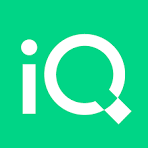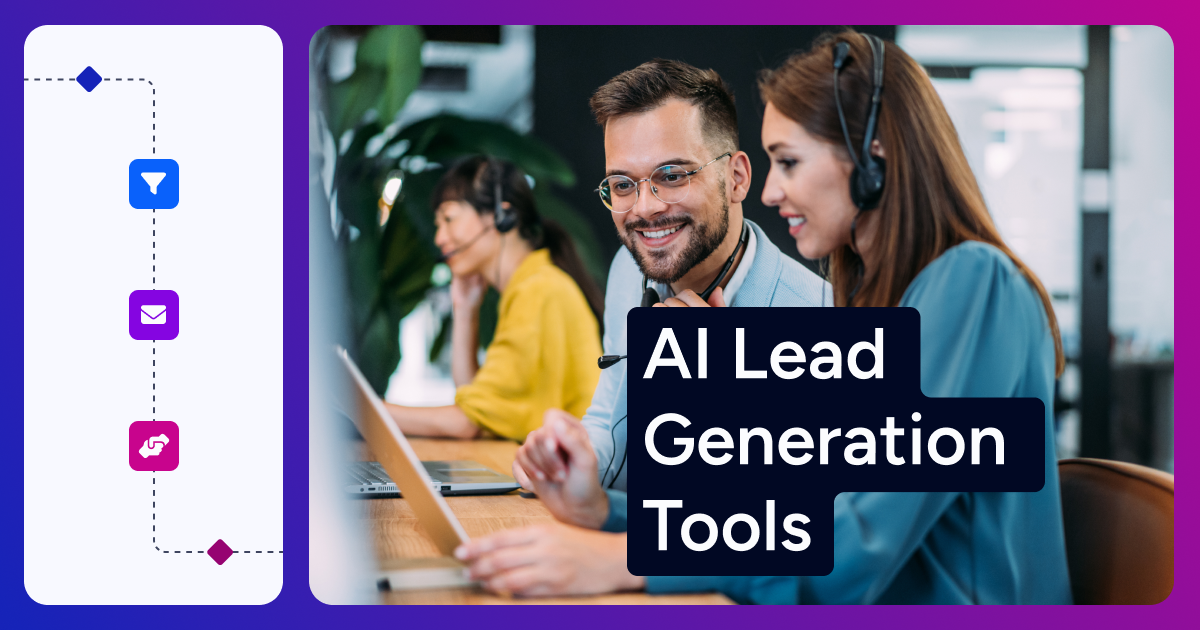Revenue teams need more than just names in the funnel; they need qualified opportunities that convert. AI lead generation software helps teams identify the right accounts and contacts, automate outreach, and prioritize efforts with real signals. This guide defines AI lead generation tools, outlines key capabilities, and ranks leading platforms to help you choose what fits your goals.
What Is AI Lead Generation Software?
AI lead generation software uses machine learning and automation to identify, capture, and enrich prospect data, then route and engage those leads across channels. These platforms connect with your website, marketing tools, and CRM to score and segment leads, surface intent, and streamline follow-up, all while reducing manual data work.
Why AI for Lead Generation Matters
Efficiency: Automates research, list building, enrichment, and first-touch outreach.
Precision: Surfaces in-market accounts and best-fit contacts with intent and scoring.
Personalization: Generates relevant messages and recommendations at scale.
Alignment: Syncs with CRM and MAP to keep data clean and workflows consistent.
Key Features to Look For
Buyer intent and predictive account scoring
AI-driven recommendations for who to contact and how to engage
Multichannel outreach (email, chat, ads) with automation
Lead and account enrichment, verification, and routing
Native CRM/marketing automation integrations and data hygiene
Analytics for conversion, attribution, and pipeline impact
Top 8 AI Lead Generation Software Tools

1. ZoomInfo Sales
ZoomInfo Sales is a modern Go-to-Market Intelligence Platform that combines a leading B2B data foundation with AI to help teams find, engage, and convert the right buyers.
ZoomInfo Sales brings together company and contact data, purchasing intent, and engagement signals to focus sellers on in-market accounts. ZoomInfo Copilot, ZoomInfo’s generative AI product, blends your first-party data with ZoomInfo’s intelligence to recommend who to reach, when to engage, and what to say, then helps execute across channels. Data orchestration keeps CRM and MAP records clean and synced so automation performs as expected.
Conversation intelligence and sales engagement tools reduce context switching and speed execution. Real-time alerts such as job changes or spikes in research ensure reps act on timely opportunities. Teams typically use ZoomInfo Sales to shorten research time, improve response rates, and build pipeline with higher intent.
Key Features:
Custom feeds of prioritized accounts and buyer intent signals
AI-guided outreach with Copilot (who to contact, timing, and message suggestions)
CRM/MAP integration and data hygiene via orchestration workflows
Conversation intelligence and sales engagement in one platform
Real-time alerts for account and contact changes
Learn More About ZoomInfo Sales

2. 6sense Sales Intelligence
6sense Sales Intelligence uses predictive analytics and intent data to identify accounts and prioritize outreach.
6sense uses buying signals to score accounts and recommend next best actions for sales. Teams use the platform to set sequences, coordinate with marketing, and find buying groups.
Key Features:
Account scoring
Buying group identification
Sales prioritization
CRM and marketing automation integrations

3. Seamless.AI
Seamless.AI provides AI-driven search to find emails, cell phone numbers, and company insights.
Teams use Seamless.AI to build lists and enrich contact data inside workflows. The platform also features Browser extensions and CRM integrations.
Key Features:
AI-powered contact discovery
Enrichment for emails and mobile numbers
Chrome extension and CRM integrations
Targeted filters

4. Demandbase One
Demandbase One is an AI-driven ABM platform that unifies data to identify, engage, and measure account-based programs.
For lead generation, Demandbase helps surface accounts, activate across channels, and deliver sales insights inside the CRM. Its AI supports rules and enterprise workflows.
Key Features:
AI-based account identification
Cross-channel activation
CRM and MAP integrations
Intent data
Learn More About Demandbase One

5. Clay
Clay is a GTM enrichment and automation platform that combines data sources with AI agents to build lead workflows.
Teams use Clay to enrich records, trigger outreach, and personalize messages. Its workflows support CRM enrichment and prospecting.
Key Features:
AI agents for enrichment and personalization
Access to data sources and APIs
Workflows for list building and routing
Export/sync to CRM and engagement tools

6. Lusha
Lusha is a sales intelligence platform with AI-driven prospecting that builds auto-updating lists with companies and contacts aligned to your ICP.
Teams use Lusha to create lists, push data to their CRM, and align campaigns to specific segments.
Key Features:
AI “playlist” lead generation
Activity-based recommendations
Contact discovery
Filters and segments
Integrations with CRM and engagement tools

7. Success.ai
Success.ai uses AI to find prospects, personalize messages, and track performance for outbound programs.
The platform focuses on cold outreach by verifying contacts, tailoring emails, and reporting results. Success.ai is often used by small teams and agencies.
Key Features:
AI prospecting
AI-generated email personalization
Campaign analytics and optimization
Workflow automation

8. LeadIQ
LeadIQ is a prospecting tool that combines contact data with an AI cold email writing assistant and CRM enrichment.
Sales teams use LeadIQ to capture contacts, track job changes, and draft first-touch messages. Integrations keep lists updated and synced with tools.
Key Features:
AI email assistant
Contact capture and enrichment
Job change tracking
CRM and engagement integrations
How to Choose the Right AI Lead Generation Software
Team needs: Map use cases (intent, enrichment, email, ABM) to feature depth.
Data coverage: Validate contact accuracy, intent sources, and regional strength.
Integrations: Confirm bi-directional sync with CRM/MAP and governance controls.
AI capabilities: Evaluate transparency, tunability, and message quality.
Ease of use: Consider onboarding time, admin overhead, and user adoption.
The right AI lead generation software should cut research time, lift reply rates, and give sellers clear next steps. Start with your process — data foundation, routing, and outreach — then select tools that integrate cleanly and deliver actionable insights.
The platforms above represent a range of options for intent, enrichment, and automation to help your team generate leads with AI and build more qualified pipeline, faster.

